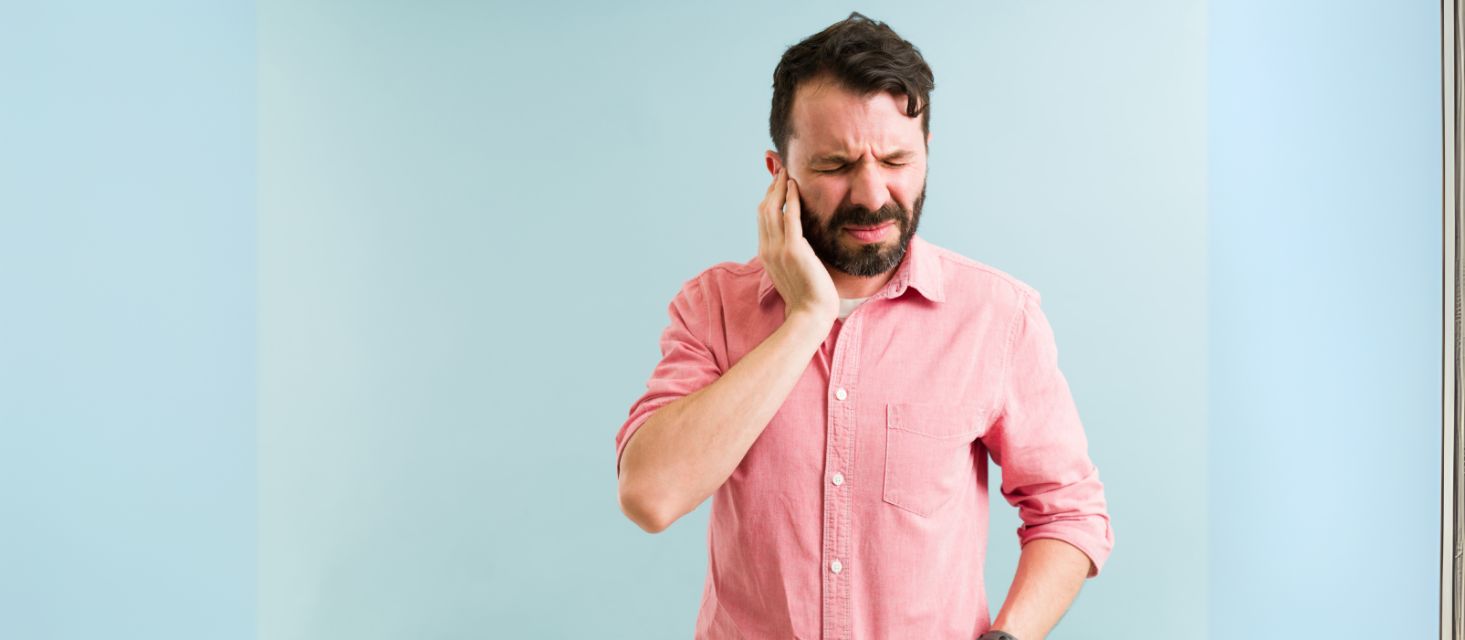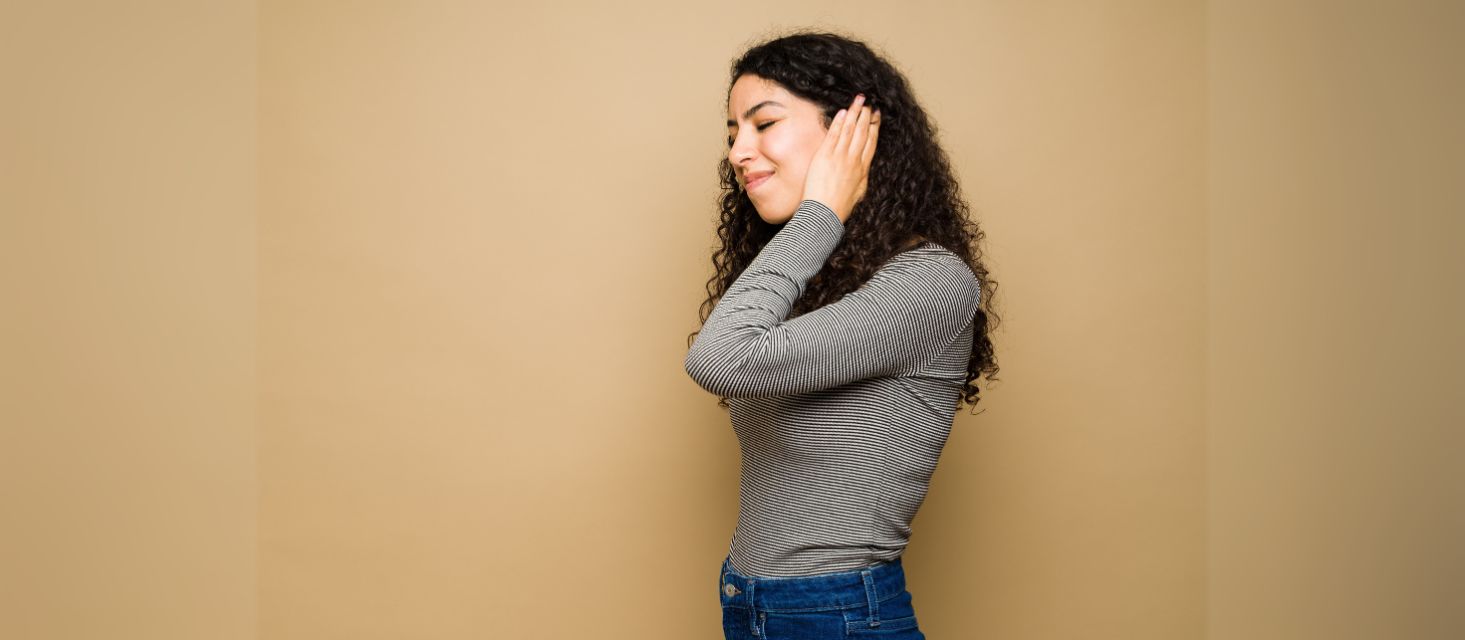Wax impaction in the ear is a common condition that affects many individuals. It occurs when earwax (or cerumen) builds up and hardens in the ear canal, leading to discomfort, potential hearing loss, and other related symptoms. While earwax serves an important protective function by blocking dirt, bacteria, and other foreign objects from entering the ear, excessive accumulation can lead to complications. This page examines the causes of earwax impaction, methods for prevention, effective treatment options, and safe ways to remove excess earwax, including the benefits of using an innovative tool like Eddy, developed by Auracle, for at-home ear cleaning.
What is Ear Wax Impaction?
Earwax impaction, also known as cerumen impaction, happens when earwax builds up and becomes hard in the ear canal. Normally, earwax is produced by glands in the ear canal and moves to the outer ear on its own. However, in some cases, the wax may not be able to exit the ear as intended, leading to a blockage. When earwax hardens and forms an obstruction, it can affect your hearing, causing discomfort, and in some cases, leading to a painful ear infection.
This condition can develop due to a number of factors, such as the overproduction of earwax, incorrect cleaning practices, or the presence of hearing aids. If you experience earache, ringing, or partial hearing loss, you may be dealing with wax impaction in your ear.
For more detailed information on ear wax removal methods, check out our Best Methods to Remove Earwax.
Symptoms of Ear Wax Impaction
The symptoms of ear wax impaction can range from mild discomfort to more severe issues that can interfere with your daily life. Common signs that you might have earwax buildup include:
-
Earache or discomfort: A dull or sharp pain in the ear.
-
Partial hearing loss: You may feel as though your ear is “blocked” or muffled.
-
Ringing in the ears (Tinnitus): This may present as a constant ringing or buzzing sound in the ear.
-
Dizziness or imbalance: Blockage in the ear canal can affect your sense of balance.
-
Coughing: The pressure from impacted wax can stimulate the ear canal and cause a reflex cough.
If you experience any of these symptoms, it’s essential to address the problem promptly before it worsens. To learn more about earwax blockage symptoms and treatments, read our article on Earwax Blockage Symptoms and Treatment.
Causes of Ear Wax Impaction
Several factors can lead to excessive earwax buildup or impaction. Let’s explore the most common causes:
-
Overproduction of Earwax
Some people naturally produce more earwax than others. This can result in an increased chance of a buildup that the body cannot expel on its own, leading to impacted earwax. -
Improper Cleaning with Cotton Swabs
One of the most common mistakes people make is using cotton swabs or other objects to clean the ear. While these may appear to clean the ear, they often push earwax deeper into the ear canal, causing a blockage. In fact, using cotton-tipped swabs is one of the leading causes of impacted earwax. -
Age-Related Changes
As people age, the earwax produced tends to become drier and harder. This change makes it more difficult for the wax to exit the ear canal naturally, increasing the risk of hard impacted earwax. -
Use of Hearing Aids or Earplugs
Regular use of hearing aids or earplugs can prevent earwax from leaving the ear canal naturally, as these devices can block the ear opening. Over time, this can result in a significant buildup of earwax, leading to impaction. -
Narrow or Abnormal Ear Canals
Some individuals have naturally narrow or irregular ear canals, which makes it more difficult for earwax to exit the ear, increasing the risk of impaction. Hairy ear canals or skin conditions in the ear canal can further exacerbate the problem. -
Excessive Earwax
Certain conditions or lifestyle choices can increase the amount of excess earwax produced. Exposure to dust, water, or loud noises may result in more earwax being produced than usual, potentially leading to wax buildup.
If you’re unsure about how to clean your ears safely, visit our guide on How Do You Clean Your Ears Safely?
How to Prevent Ear Wax Impaction
Preventing ear wax impaction often comes down to how you care for your ears. Here are some useful tips for maintaining good ear health:
-
Avoid Inserting Objects Into the Ear Canal
Never use cotton buds, hairpins, or other objects to clean the inside of your ear. These can push wax further into the ear and cause impaction. Clean only the outer ear with a soft cloth. -
Allow Earwax to Clear Naturally
Your body naturally expels earwax, so unless there is a noticeable buildup or discomfort, it’s best to let the earwax come out on its own. -
Use Ear Drops
If you feel a buildup of earwax, you can use over-the-counter ear drops to soften the wax, allowing it to naturally exit the ear canal. Carbamide peroxide and hydrogen peroxide are two common ingredients found in ear drops that help soften earwax. -
Regularly Clean Hearing Aids and Earplugs
If you use hearing aids or earplugs, clean them regularly to prevent earwax buildup. Remove the devices when not in use to allow the ear to breathe and prevent wax from accumulating. -
Visit an Audiologist for Regular Check-Ups
If you have a history of earwax impaction, it might be helpful to visit an audiologist or ENT specialist regularly to check for buildup, especially if you use hearing aids or other devices.
For more information on ear cleaning and when to clean your ears, check out our post on When Should I Clean My Ears? A Guide to Ear Wax Removal.
How to Safely Remove Wax Impaction
When earwax becomes impacted, it’s essential to remove it properly to avoid damaging the ear canal or eardrum. Here are the safest methods to remove hardened earwax:
-
Ear Irrigation with Water
Ear irrigation is a popular and effective way to remove impacted earwax. It involves flushing the ear canal with warm water to loosen the wax and help it exit. At Auracle, we recommend using Eddy, a next-generation ear irrigation tool designed for safe, comfortable, and effective ear cleaning at home. The Eddy uses adjustable water pressure, a rotating nozzle, and customizable tips to ensure the cleaning is both safe and precise. Learn more about how to use the Eddy in our Instruction Video. -
Ear Drops
Ear drops are another common way to soften earwax. These drops typically contain mineral oil or baby oil and are used to break down the earwax, allowing it to come out naturally. After applying the drops, you should lie on your side for a few minutes to allow the drops to penetrate the earwax. -
Professional Earwax Removal
If home treatments are ineffective, or if you experience pain, dizziness, or hearing loss, seek professional help. Audiologists or ENT specialists are trained to safely remove impacted earwax using special tools, such as a manual removal technique, suction, or micro suction. -
Avoid Ear Candles
While ear candles are sometimes marketed as a natural way to remove earwax, they are generally ineffective and can be dangerous. Ear candles can cause burns or even damage the ear canal and eardrum, so it’s best to avoid them. Learn more about the dangers of ear candles in our post, Do Ear Candles Work?.
Closing Insights
Earwax impaction may seem like a minor issue, but it can lead to discomfort and even hearing loss if not addressed properly. Fortunately, with the right preventive measures and tools, you can keep your ears clean and healthy. By avoiding cotton swabs, using ear drops, and opting for safe ear irrigation methods like the Eddy, you can effectively manage wax impaction.
At Auracle, we believe that ear health should be simple, effective, and safe. Our Eddy ear irrigation tool is specifically designed for home use and allows you to remove excess earwax with precision, comfort, and minimal effort.
If you’re dealing with impacted earwax or simply want to learn more about how to safely clean your ears, visit our product page for more information about the Eddy.
FAQ
How do you remove wax impaction from your ear?
To remove wax impaction, you can use ear drops to soften the wax or opt for ear irrigation to flush the ear with warm water. For stubborn cases, seek professional earwax removal from an ENT specialist.
How do I know if my earwax is impacted?
If you experience symptoms such as ear pain, a feeling of fullness in the ear, partial hearing loss, or ringing in the ears, it may indicate impacted earwax.
How do you unblock a compacted ear?
To unblock a compacted ear, try using ear drops to soften the wax or perform ear irrigation. If these methods don’t work, visit an audiologist or ENT specialist for safe removal.
Can impacted earwax heal itself?
Most cases of impacted earwax do not resolve on their own. However, with the proper treatment, such as using ear drops or ear irrigation, impacted wax can be safely removed. In more severe cases, you may need to see a professional for removal.







Share:
Related Blogs
Ear Irrigation Myths Debunked: Everything You Need to Know
Ear Irrigation Myths Debunked: Everything You Need to Know